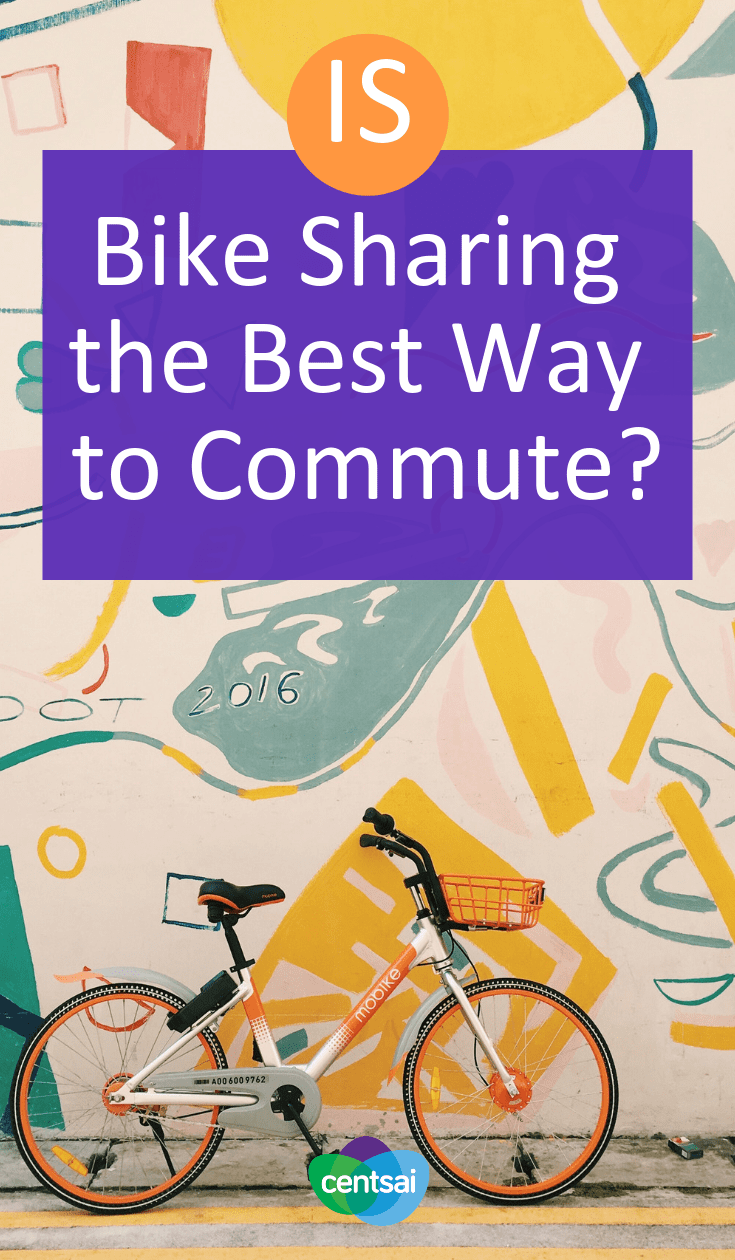
The situation is familiar: You get caught in traffic, or your bus shows up 20 minutes late. Commuting can be a nightmare for many Americans — especially in big cities like New York, where the average commute time is 36 minutes each way, according to the United States Census Bureau.
In the past decade, bike sharing has become a popular way to get around. It's an eco-friendly, cost-effective way to commute. You can get a workout while going from point A to B and it can be more convenient to hop on a bike instead of walking or waiting for the subway or bus. Since 2010, more than 123 million trips have been taken on a bike-share service, according to the National Association of City Transportation
Officials.
This App Makes Managing Your Expenses Easy — Start Budgeting Today >>
 So How Much Does a Bike Sharing Membership Cost?
So How Much Does a Bike Sharing Membership Cost?
Here’s the breakdown of the cost for the top four bike-sharing companies in the country.
Citi Bike (New York City)
Single ride: $3 (one ride up to 30 minutes)
Day pass: $12 (unlimited 30-minute rides for 24 hours)
Annual membership: $169/year or $14.95/month (unlimited 45-minute rides)
Additional options: Citi Bike provides discounts for New York City Housing Authority residents, food stamp recipients, members of certain credit unions, and veterans.
Divvy (Chicago)
Single ride: $3 (up to 30 minutes)
Day pass: $15 (unlimited 3-hour rides for 24 hours)
Annual membership: $99/year or $9.95/month (unlimited 45-minute rides)
Additional options: Divvy provides discounts for income-eligible residents or university students.
Bluebikes (Boston)
Single ride: $2.50 (one ride up to 30 minutes)
Day pass: $10 (unlimited two-hour rides for 24 hours)
Annual membership: $99/year or $10/month (unlimited 45-minute rides)
Additional options: Bluebikes provides discounts for income-eligible residents.
Capital Bikeshare (Washington, D.C.)
Single ride: $2 (one ride up to 30 minutes)
Day pass: $8 (unlimited 2-hour rides for 24 hours)
Annual membership: $85/year or $8/month (unlimited 30-minute rides)
Additional options: Capital Bikeshare provides discounts for income-eligible residents.
Save Simply and With Ease Toward Your Financial Goals >>
Is Bike Sharing Worth It?
It depends.
“Generally, the costs of bike sharing at its full price is cheaper than taking public transportation or driving if you are using it every day,” said Zoe Kircos, director of grants and partnerships for People for Bikes, an advocacy group.
If you use bike sharing as your sole mode of transportation, you can save hundreds of dollars a year. Here’s a breakdown of how much it would cost to use various transportation systems in New York City:
The average driver in an urban area pays $7,321 to own and operate a new vehicle according to analysis from AAA. This figure accounts for factors like gas prices and auto insurance. (Hint: If you own a car, an easy way to keep costs down is to shop around for insurance. Policygenius can help you compare insurance companies for the best rate.)
Public transportation can also be costlier than bike sharing. The cost of a single ride on the bus or subway in New York is $2.75, and 30-day transit passes cost $121 a month or $1,452 a year.
Only a portion of riders use bike sharing as their only way to get around, said Kircos. Many commuters use the service for occasional short trips or to get to public transportation stops.
“Using a bike-share can get you mostly where you need to go,” said Kircos. “But it’s really meant for shorter trips that are under three miles.”
Start Managing Your Finances — Download This Personal Finance App >>
When Bike Sharing Isn’t Worth It
Using a bike sharing service as your way to and from work can be a commitment. If you seldom bike, jumping into an annual membership may not be for you. Depending on where you live, biking during the winter months may not be the best option, said Kircos.
If you are an advanced biker, it may make more sense to purchase your own bike, which will save you money in the long run. Consider purchasing bicycle insurance before you ride. It could cover medical bills and bike replacement if you get into an accident. In some cases, your renter's insurance or homeowners insurance may already cover your bike if it gets damaged or stolen. Here’s a guide to how renters insurance personal property protection works with bikes.
This article originally appeared on Policygenius.











